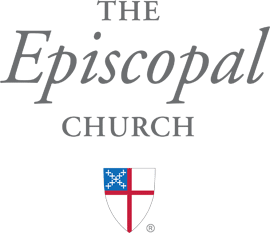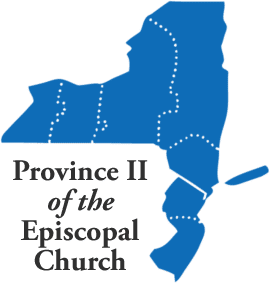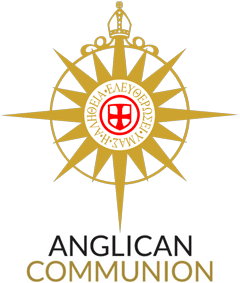
After working alone for 94 years, our diocesan seal now has a partner to help carry the load. Meet the streamlined version of the diocesan seal!
Our original diocesan seal, adopted at the 1930 Diocesan Convention, will remain in use as the official seal, engraved on the Bishop’s ring and stamped in wax on official documents.
The idea for a streamlined version originally came about because of the difficulty of having the official seal, with its intense detail, embroidered on clothing. The streamlined seal includes all the required elements of the official seal, but in a lighter, more modern form. It also uses the same colors of blue, gold, and red.
Diocesan staff members Nina Nicholson, John King, Cynthia McChesney, and Jane Jubilee worked with graphic designer Libby Clarke to develop the new design.
Look for the streamlined seal to appear in the future on the aforementioned clothing, diocesan “swag,” and other non-official uses.
What are the required elements of our diocesan seal?
The bishop’s miter with crozier and key – these are standard elements of Episcopal diocesan seals.
The peacock – a symbol of resurrection.
A shield with cross patée and fusils in saltire – now we’re starting to get into both heraldry and the history of New Jersey and the Episcopal Church. The committee that designed our diocesan seal took the cross patée (a cross with arms that narrow at the center and flare outwards towards the ends) from the arms of John, Lord Berkeley, and the fusils (the four diamond shapes) from the arms of Sir George Carteret. Why these two gentlemen? Because they were the founders of the British colony that would eventually become the state of New Jersey. The committee arranged the fusils “in saltire” (in an X shape) as a nod to the flag of Scotland, the country whose bishops consecrated Samuel Seabury as the first American Episcopal bishop.



